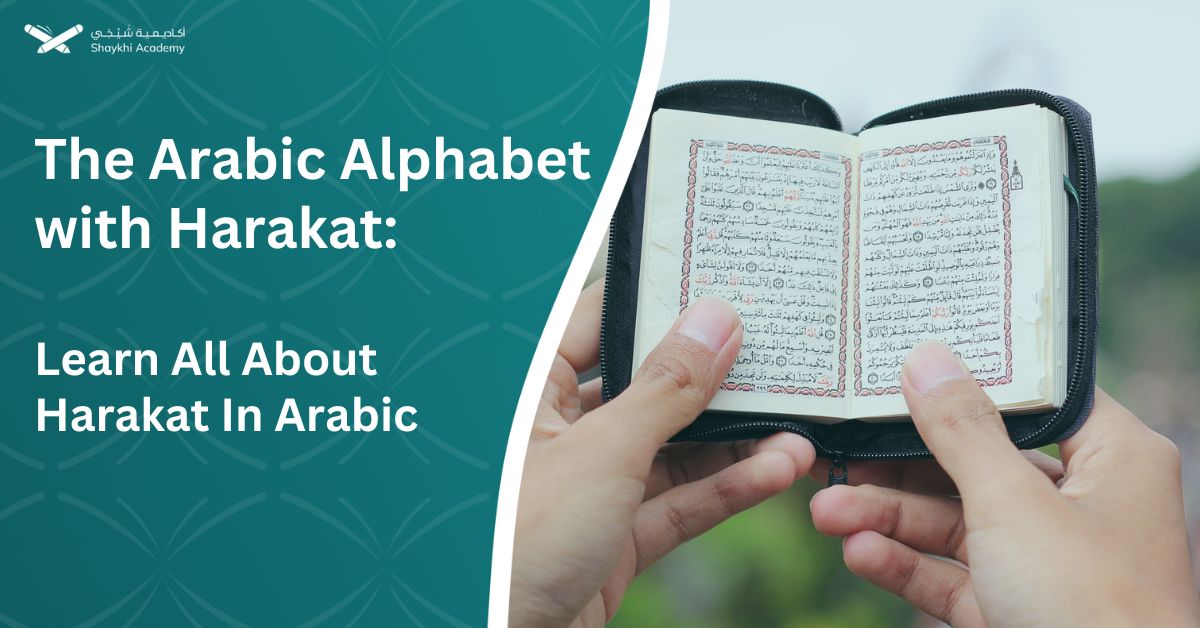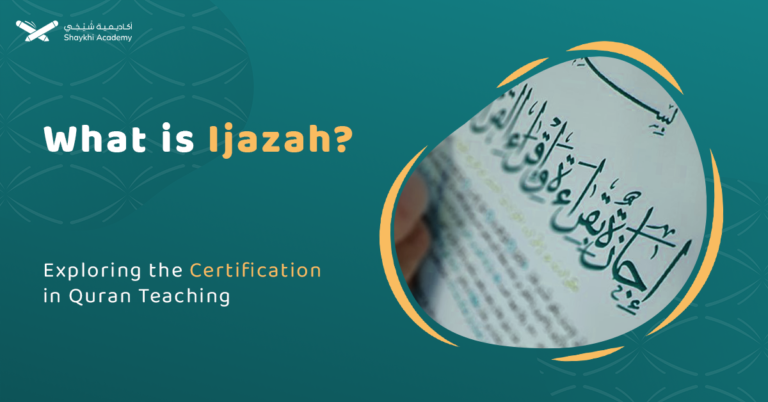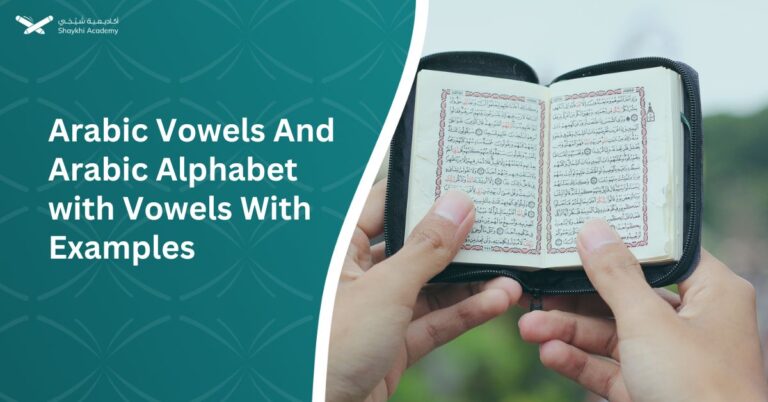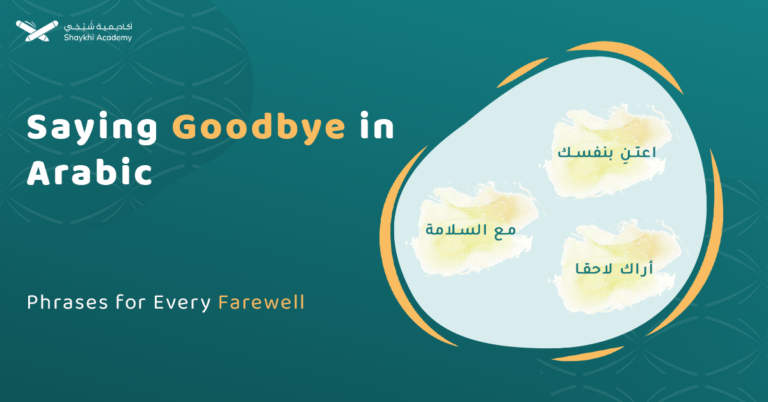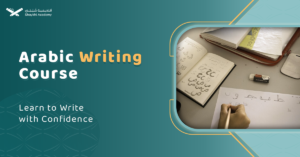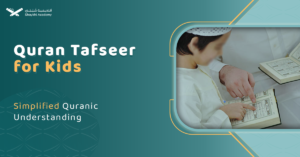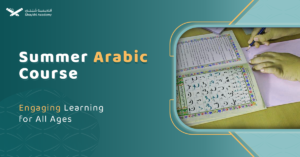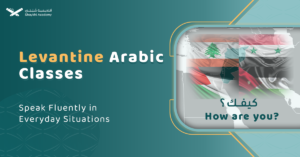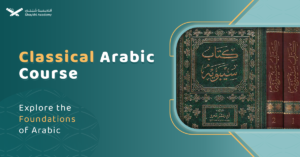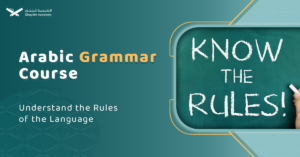Learning Arabic diacritics (Harakat) is an indivisible part of learning the Arabic language. They are substantial because they clear the type and the meaning of a word.
Arabic Harakat shows how the word can be articulated, subsequently, how it can be understood inside a text. Modern Standard Arabic (Fus ‘ha) cannot be understood without using them.
The Arabic Alphabet with Harakat:
The Arabic alphabet consists of 28 letters, with each letter having a basic form that can be modified to represent different sounds and phonetic features. To aid in pronunciation and comprehension, Arabic uses diacritical marks called harakat.
Harakat are crucial for learners and readers, as they help differentiate between words that have the same consonantal skeleton but differ in meaning due to variations in vowel sounds. Therefore, the Arabic tutors of the Arabic language courses at Shaykhi Academy focus on teaching students Harakat.
While Arabic script often omits these vowel markings in everyday writing, they are essential in contexts like children’s books, learning materials, and religious texts to ensure accurate pronunciation and understanding.
What Is Harakat or Arabic Diacritics?
Harakat (also known as tashkil) are diacritical marks used in the Arabic script to indicate short vowels, nunation (indicating indefinite accusative or genitive case), and other phonetic features.
These marks help clarify the pronunciation and grammatical context of words, especially in texts where the full vowels are not written out.
Read Also Harakat in Tajweed.
What Does Harakat Mean in Arabic?
In Arabic, the word “Harakat” (حركات) is plural, and the singular form, Haraka means “movement” or “motion”. In the context of Arabic language and grammar, it specifically refers to diacritical marks or symbols that are used to indicate vowel sounds and other phonetic features in written Arabic.
What Is Harakat in Arabic?
“Harakat” refers to a phonetic mark or symbol positioned above or below an Arabic letter to indicate its correct pronunciation and convey the precise meaning of the word.
Given that identical letter combinations can carry various meanings in Arabic, Harakat are employed to distinguish between these different interpretations. To make it easier watch out the following two words in the following example:
مَدرسة
مُدرِسة
Although these two words are exactly the same, they have completely different meanings, the first word means school, whereas the second one means female teacher.
We recognized this difference due to Harakat. Even though it’s not a standard part of Tajweed, Shaykhi Academy’s Tajweed tutors make sure to teach their students the different Harakat to prepare them to recite the Quran in the correct m anner.
How Many Harakat Are There in Arabic?
There are six vowels in the Arabic language. These six vowels are called Harakāt (حَرَكَات). They can be divided into two divisions, long vowels and short vowels. They are as follows:
1- Arabic Harakat of Long Vowels:
The long vowels are three letters in the Arabic alphabet. These three Arabic long vowels are to some extent similar to the five sounds of the English vowels which are (A, E, I, O, U). These three long vowels are a part of the main letters of the Arabic alphabet.
The Harakat of long vowels are as follows:
ا = Aa
و = o
ي = E
2- Arabic Harakat of Short Vowels:
This division consists of three analogous short vowels known as diacritic marks, They are symbols which are drawn either above or under a particular letter. They are called:
Fat-ḥa, it is drawn like that ( ـــَــ)
Dammah, it is drawn like ( ـــُــ)
Kasra, it is drawn like that ( ـــِــ)
How to Type Arabic with Harakat?
Typing Arabic with harakat requires a specific approach depending on the software or platform being used.
One common method is to utilize an Arabic keyboard layout, which allows for direct typing of harakat along with the letters. This layout typically includes keys for commonly used harakat, such as Fatha, Kasra, and Damma, as well as other marks like shadda, and sukun.
For those without an Arabic keyboard, virtual keyboards can be used on devices to provide an on-screen representation of an Arabic keyboard, enabling users to click or tap on the desired letters and harakat.
Alternatively, some software and platforms offer built-in tools for adding harakat to Arabic text after typing the letters. This can be done by selecting the text and choosing the appropriate harakat from a menu or using keyboard shortcuts.
The Purpose of Using Arabic Diacritics
There are two reasons for using Arabic Diacritics
1. Show the Correct Pronunciation of a Word
In some cases, the Arabic text does not give sufficient clues about the correct pronunciation of a word, So the main purpose of the Arabic diacritics (Harakat) is to provide a phonetic guide for the correct pronunciation of this word.
2. Show The Right Meaning of a Word
Many Arabic words which are typically the same and contain the same letters with the same sequence have different meanings. The Arabic diacritics helps to clarify the intended meaning of a word.
How To Read Arabic Without Harakat?
To read Arabic without Harakat is a cool skill that those who have mastered the Arabic language enjoy. To acquire such a special skill, there are some steps to follow:
1- Mastery of Arabic Grammar:
According to some linguistic scholars, mastering the grammatical rules and structural forms of Arabic enables one to easily infer Arabic Harakat. They argue that grammar facilitates the expansion of vocabulary, understanding of synonyms, antonyms, prepositions, verbs, nouns, and more.
2- Contextual Inference of Harakat:
Other linguistic scholars suggest that one can determine the suitable Harakat by inferring it from the context in which a word is used. Context aids in understanding the precise meaning of a word, which in turn helps in deciding its correct pronunciation and the appropriate Harakat.
3- Mastery of Arabic Listening Skills:
The more one practices listening to Arabic, the better they become at using harakat correctly. It’s worth noting that Arabs in the era before and after Prophet Mohammed did not use harakat in their written language, yet they spoke Arabic correctly and accurately. This is attributed to their mastery of listening skills; the rule being that correct pronunciation follows accurate hearing.
4- Mastery of Arabic Reading Skills:
Practicing the Arabic language reading skills is very important to learning how to differentiate between the different Harakat. Joining a quranic recitation course such as the one at Shaykhi Academy can help you master these Harakat.
Enhance your understanding and recitation of the Quran with our comprehensive Arabic course at Shaykhi Academy.
The Arabic language course at Shaykhi Academy is designed to help you master the intricate diacritical marks that are essential for accurate Quranic recitation.
Whether you’re a beginner or looking to refine your skills, our course offers a structured approach to learning Arabic Harakat, ensuring you can confidently recite the Quran with precision and understanding.
Join us today to embark on a transformative journey in learning the beauty of Arabic script and its significance in reciting the Quran.
Why Choose Shaykhi Academy?
- Connect with highly qualified native tutors.
- Flexible scheduling to suit your busy lifestyle.
- Affordable classes tailored for all levels.
- Accessible from anywhere around the globe.
Discover Our Range of Courses:
- Arabic Noorani Qaida: Lay a solid foundation for Quranic studies.
- Online Quran Classes for Kids: Engaging lessons for lifelong learning.
- Tajweed Rules for Kids: Learn to recite with confidence.
- Quran Hifz for Kids: Step-by-step guidance to memorize the Quran.
- Quran for Adults: Introduce yourself to Quran reading and Tajweed rules.
- Online Arabic Courses: Master the language of the Quran.
- Islamic Studies: A wide range of topics related to Islam, including theology, law, Quranic studies, Hadith.
Don’t Miss Out on Your Chance to Excel!

Conclusion
Arabic Harakat, or diacritical marks, play a crucial role in learning how to recite the Quran accurately. These marks are essential for indicating the correct pronunciation of words, especially since Arabic script traditionally does not include vowel markings.
